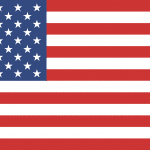Members of a culture usually have an attachment to that culture. But what happens when the members of that culture–including the cultural elite, and including the educators who transmit that culture–begin to loathe the culture that formed them? The culture unravels.
That almost never happens, but it seems to be happening today. It isn’t just the current protests and the vandalism of public monuments. The Black Lives Matter movement has brought to the nation’s consciousness the profound and enduring evil of racism. But the effect has not just been to inspire the broader public to address the problem–though, hopefully, that will happen–but to delegitimize all of American history. The iconoclastic outbreak isn’t stopping with Confederate monuments; rather, it has broadened out to include the destruction of all American monuments. But long before this turmoil, schools and universities have been vandalizing and demonizing pretty much every aspect of American culture, not only because of race but for many other reasons.
Eric Kaufmann, a professor of politics at the University of London, has studied this curious phenomenon. His article The Great Awokening and the Second American Revolution, published in Quillette, is full of fascinating analysis from the social sciences about how and why our culture is dissolving. I’ll have some other posts based on his article. Today, I’d like to draw your attention to the results of a survey that he conducted as part of his research.
Prof. Kaufmann was curious as to just how far American progressives wanted to go in changing their country and their own cultural identity associated with it. He came up with a series of propositions–some of them he thought far-fetched–directed at individuals who identified themselves as “liberal” or “very liberal,” who then indicated whether they agreed or disagreed. Here are some of the more striking results:
Renaming America
Move, after an open public process, to a new name for our country that better reflects the contributions of Native Americans and our diversity as a people. One out of every three liberals (33%) and 41% of very-liberals want to rename America.
True, Amerigo Vespucci wasn’t really the first European to discover the New World, as many thought at the time, including an early mapmaker. I suppose the continents in the Western Hemisphere could have been named North and South Vespucci.
Some have said that the Americas should have been called “Columbia,” after Christopher Columbus, but that explorer has an even worse reputation today. To be more historically accurate about the European discovery, we could name it after Leif Erikson. I actually kind of like that idea. The name “Leif” is pronounced in the Scandinavian languages not “leaf” but “lafe” or “life.” We could call our country “Leifland,” pronounced “Life Land.” But I’m sure that would offend the pro-abortion lobby.
But naming the country after any European discoverer would be colonialist. There is actually a movement to use a Native American name, but what tribe would become privileged by using their language? The 1977 World Council of Indigenous People proposed changing the name of America to Abya Yala. Other proposals include Ixachilan and Runa Pacha.
See the Wikipedia article Naming of the Americas, which also includes an argument that the word “America” does not come from “Amerigo” but from an indigenous word, evident today in the name of the Amerrisque Mountains of Nicaragua. “The name AMERICA or AMERRIQUE in the Mayan language means, a country of perpetually strong wind, or the Land of the Wind, and … the [suffixes] can mean … a spirit that breathes, life itself.” Which brings us back to Life Land! The argument is that the native people that Columbus encountered gave him this name for their land, which he, in turn, gave to that early map-maker.
Come Up with a New Constitution
“Move, after public consultation, to a new American constitution that better reflects our diversity as a people.” An astonishing 70% of liberals and 79% of the very-liberals want a new constitution! Not just amending the current one, to eliminate the electoral college or the Second Amendment, but starting over with a completely different one!
This begs for follow up research: What kind of government do liberals and very-liberals want? What features of their new constitution would “better reflect our diversity as a people”?
Impose Quota System for Art Museums
“Rebalance the art shown in museums across the country until an analysis of content shows that it reflects the demography of the population and perspective of Native people and citizens of color.” This was the most popular of the proposals, garnering the approval of 76% of the liberals and 81% of the very-liberals.
No longer would art museums be able to base their collections or exhibitions on the basis of artistic quality, historical significance, or public interest. The only criteria that will be allowed is “the demography of the population.” (How would that be broken down? “Native people and citizens of color” and also, presumably, the correct percentage of women. What about sexual orientation? There may be be more gay artists than are represented in the general population, and the percentage of transexuals in the demography of the population is extremely small. This proposal would probably result in fewer LGBT artists than are probably already there. Shouldn’t we be offended at such homophobia and transphobia in the liberal and very-liberal community? Will the demographic breakdown apply to other ethnic groups, such as German-Americans and Polish-Americans? What about religious groups?)
Create a New National Language
Consider adopting a new national language, that will be forged from the immigrant and Native linguistic diversity of this country’s past. This was the least popular proposal, gaining the support of only 15% of liberals and 17% of very-liberals.
English is a colonial language. So is Spanish. We could adopt a Native American language, but, again, which one? This proposal is to “forge” a “new national language,” a sort of Esperanto based on the tribal languages, but also the immigrant languages (which could presumably include elements of English).
But language doesn’t work that way. You can’t just make one up. By its nature, a real language is a communal–that is, a cultural and historical creation. Also, learning a new language is hard–most Americans resist learning even an actual foreign language–and for everyone in the whole country to learn a completely different language that no one has ever spoken before would be really, really hard, to the point of impossible.
So no wonder even very few of the liberals and very liberals, eager though they are to change everything else, want to give up the English language.
But that raises a point that is relevant to the whole effort to purify American culture: You can’t ever be pure. Every time you open your mouth to speak English (or Spanish), you are being colonialist, drawing on American history and its European heritage. That means you can never attain complete political righteousness, even in your own terms. You can reject traditional morality and replace it with a new morality of your own creation that you think will be easier and in conformity with your desires, but you cannot live up to your own standards. Sin permeates everything. You see part of that, but sin will also permeate the utopian nation you want to create. And sin permeates you. Sin has to be dealt with by atonement, redemption, and forgiveness. And you can’t accomplish that either. God, in His incarnation, has. Accepting that means giving up on your self-righteousness and having to accept the reality of living in a broken world, but that’s the only way forward.
Read the article for the other proposals the study asked about, including replacing older buildings with structures “that don’t perpetuate a Eurocentric order” (liberals: 52%; very-liberals: 59%); “changing the layout of our cities, towns, and highways, moving away from the grid system to follow the more natural trails originally used by Native people” (liberals: 23%; very-liberals: 27%); devising a new flag (liberals: 32%; very-liberals: 42%); and much more.
Illustration: Rainbow America Flag [see “The New American Flag: U.S. Citizens Sign Petition for Rainbow Flag“], from Flag_of_the_United_States.svg: United States Government, 1959derivative work: Julyo / CC BY-SA (https://creativecommons.org/licenses/by-sa/3.0) via Wikimedia Commons.















